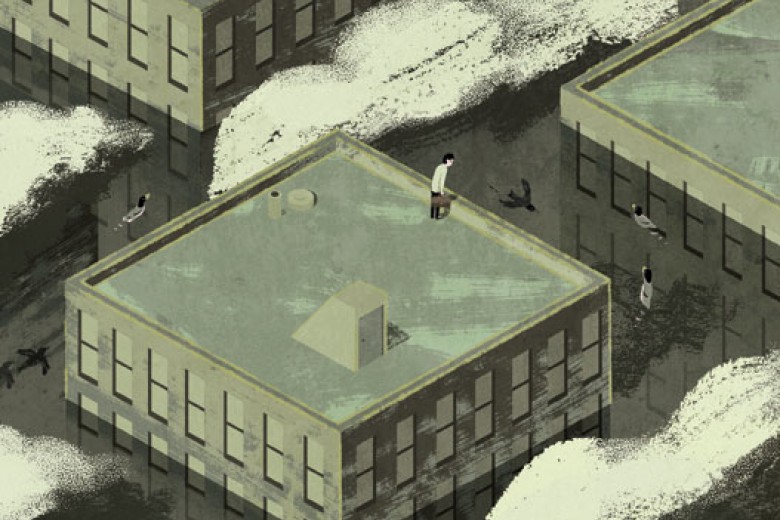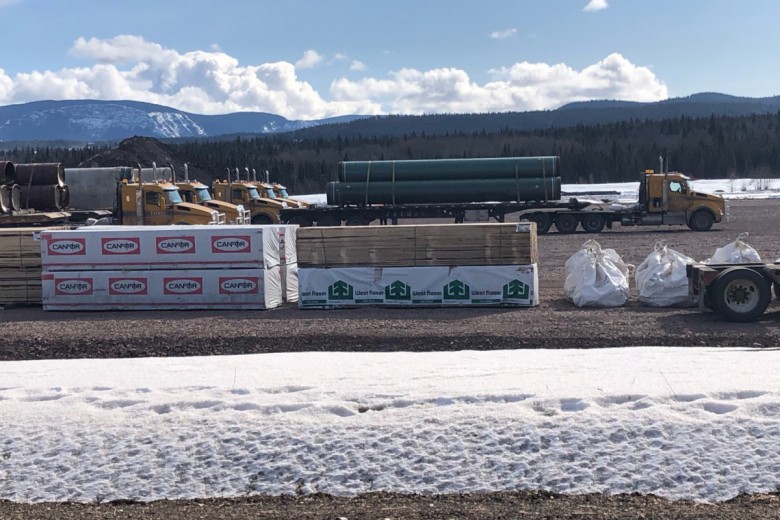
Stupid to the last drop: How Alberta is bringing environmental armageddon to Canada (And doesn’t seem to care)
By William Marsden
Random House, 2007
William Marsden is a senior investigative reporter for the Montreal Gazette. He has won awards previously and his latest book, Stupid to the Last Drop: How Alberta Is Bringing Environmental Armageddon To Canada (And Doesn’t Seem to Care) has already won the National Business Book Award. But this book is about much more than business. It should, in fact, be required reading for anyone who cares about the environment, democracy and the health of the Canadian political economy.
Stupid to the Last Drop examines the impact that the oil and gas industry, particularly in its exploitation of the Athabasca tar sands, is having on Alberta, Canada and beyond. The resources might be in Alberta, but the insane pace of development has been decided elsewhere by eager connivance from local business and political elites. Marsden documents how the tar sands figure prominently in the Bush administration’s campaign to secure reliable sources of oil in the face of competition and growing demand from China, Russia and elsewhere. “A new cold war has begun,” Marsden writes. “This time it is all about energy.”
U.S. Vice-President Dick Cheney emphasized the importance of the tar sands in a report to the president: “Their continual development can be a pillar of sustained North American energy and economic security.” This strategy was embodied in the U.S. Energy Policy Act of 2005, which calls for North American energy self-sufficiency by 2025, with the cornerstone of the plan being the tar sands. The act directs the U.S. government to establish a special relationship with Alberta, bypassing the Canadian federal government if necessary. So far, it has not been necessary. Soon after Harper’s Conservatives took office in February 2006, officials were sent to the U.S. to meet with oil executives and the U.S. Energy Department to discuss plans for ramping up tar sands production. The oil industry, Marsden shows, was setting the agenda in both countries.
Marsden does a superb job of describing the negative consequences this all-out rush to develop the tar sands has had on the environment. The open-pit mines can be seen from space and are projected to eventually cover a territory the size of Florida. Processing the tar sands uses vast quantities of water—enough to meet the needs of over one million people. This water usage will more than double by 2010, when the projects will be withdrawing more water from the Athabasca River than the amount used by the entire urban population of Alberta. The withdrawal from the Athabasca River has already had negative consequences for both the river and the delta beyond (see Lori Theresa Waller, “‘We can no longer be sacrificed’: First Nations resistance to tar sands development is growing,” Briarpatch, June/July 2008).
Vast reservoirs of tailings from bitumen processing are located close to the river and are already leaching poisonous chemicals into the Athabasca River system. Much of the river, and indeed the entire ecosystem north of the tar sands development, has already been polluted to the point where fish and game are a danger to human health. As a result, Aboriginal settlements have experienced increased cancer rates. The recent uproar over the fate of hundreds of ducks that landed in one of the reservoirs and died is just the beginning. It will get much worse in the near future as development doubles, and then doubles again.
Water contamination is only one part of the equation. If it requires two to five barrels of water to produce one barrel of bitumen, it also requires 700 to 1,200 cubic feet (20 to 34 cubic metres) of natural gas. Conventional supplies of natural gas peaked decades ago in Alberta. Petroleum companies are desperately developing new sources to meet the growing demand. This entails obtaining methane from the coal beds underlying much of the province, a high-impact process that requires vast quantities of water and chemicals. Coal-bed methane development is expanding at a tremendous rate and is poisoning and depleting the underground aquifers upon which 90 per cent of rural Alberta residents depend.
The destruction of Alberta’s environment will be further exacerbated by global warming—to which tar sands development is the worst contributor in Canada. Much of the Prairie region has been arid even without global warming. Scientists have established that the 20th century was the wettest in 2,000 years and project that global warming will cause waterways and underground aquifers to deplete. If present trends are not reversed, much of northern Alberta will become an ecological wasteland and the southern Prairies a virtual desert well before the end of this century.
Marsden does a superb job of demonstrating what oil has done to Alberta politics and, to a lesser extent, Canadian politics. Former premier Ralph Klein gutted the Alberta Department of Environment and saw to it that any environmental regulating agencies were stacked in favour of oil companies. Health Canada and the Alberta Department of Health have repeatedly lied to the public: they lied about the cancer rates in Fort Chipewyan, a small community north of Fort McMurray; they buried reports on arsenic levels in moose meat and marsh plants; and on environmental problems their studies of environmental problems were unbelievably slipshod. Dr. John O’Connor, a physician based in Fort Chipewyan, challenged the government on their misrepresentation. He was greeted by a campaign of slander from provincial and federal officials and an attempt to take away his license for “unduly alarming the people of Fort Chipewyan and causing them to mistrust Health Canada.” Dr. O’Connor left Alberta and settled in Nova Scotia. He is one of many to suffer intimidation from government and industry officials. Laws are so biased on behalf of the industry that farmers, ranchers, Aboriginal communities and other sectors of Alberta society have little hope of redress, as Marsden skillfully documents.
What the oil industry is doing to the Alberta environment amounts to criminal insanity, driven by greed. This stupidity is compounded when we look at the paltry economic payoffs for the public sector and the overall economy. Royalty rates vary, but in the tar sands they can be as low as one per cent. When you add in federal and provincial tax breaks and incentives, it turns out that the public subsidies given to many of the companies actually exceed the royalties collected, meaning that Alberta citizens are themselves paying for the destruction of their environment. The companies are also given special breaks on property taxes that see them paying about one-third of what other businesses pay in infrastructure-deficient Fort McMurray.
Fort McMurray is the commercial centre of the regional municipality of Wood Buffalo, which covers an area the size of Ireland with a population of 79,810 people. In 2006, this area produced crude oil worth $329,282 per capita—that’s per capita, not per worker. In that same year, the oil companies paid $71.6 million to the municipality, which works out to less than $1,000 per capita.
Indeed, the amount of revenue flowing to the Alberta government from the entire petroleum industry is a small fraction of what other oil-producing jurisdictions receive. In Norway, for instance, the state oil company controls more than half of all production and the remaining companies pay a hefty royalty. Alberta, by way of contrast, makes more money from gambling revenues than from tar sands royalties. The Alberta Heritage Fund, founded in 1976, had only $15.4 billion by 2006. The equivalent fund in Norway, begun only in 1996, is now approaching $400 billion and is expected to top $500 billion in the next few years.
Meanwhile, inflation has ravaged Alberta: house prices and rents are beyond the reach of people with average incomes. Homelessness has become endemic. Inflation is worst in Fort McMurray, where the government puts the poverty line at $60,000 per couple or $93,000 per family. Rent for a tiny two-bedroom apartment starts at $3,000 per month, plus utilities. Inflation is also affecting the rest of Canada, where the rising Canadian dollar has gutted many manufacturing industries. All of these side effects have been avoided in Norway, where the government, rather than the oil industry, calls the shots.
Marsden, a very capable investigative journalist, has done a good job of describing and analyzing the problem. He does not discuss a strategy for halting the madness, although he does point out that Canada, unlike all other countries where oil is an important source of revenue, has no national energy policy. This means that the policy is set by the oil companies and the U.S. government and supported by the energy provisions of NAFTA, the North American Free Trade Agreement. The interests of the Canadian people are entirely left out of the equation and will not be taken into account until a real national energy policy is in place.



_780_520_90_s_c1.jpg)


